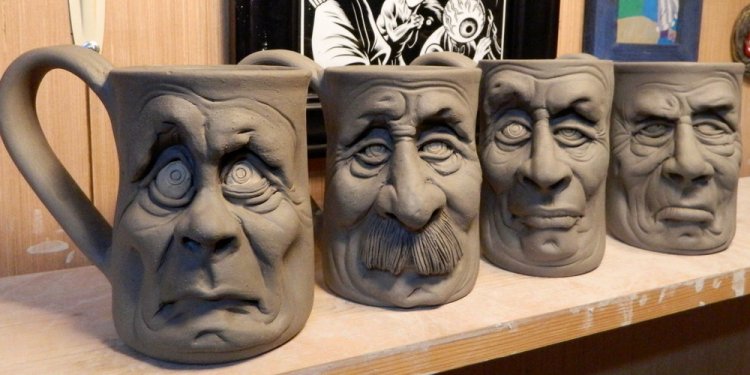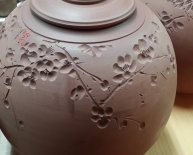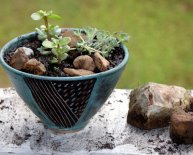
Coil Pottery ideas
Level: Primary, Junior, Middle School, High School
Grades: K and up | Age: 5yrs and up | : Lauren Geggus
[Laura is in the Art Education program at Illinois State University]
Kids can learn how to make coil pots out of clay.
Art Concept:
Cultural Influences on Art FormsArtmaking Processes and Techniques:
coil and slab building techniqueArt Elements/Principles of Design:
form, shape, line, balance, and colorRationale:
Making an art form using processes and techniques influenced by those of a specific culture can help one to better understand that culture as well as be more sensitive to other cultures in general. Incorporating one's own personalized designs provides the opportunity for individual expression. Learning about the roles of the artists and crafts people in the context of their cultures helps one to better understand the contribution of individuals to that culture.
Objectives:As a result of this unit, students will:
Artmaking
- Build a container with clay, using the coil and slab hand-building techniques. Glaze containers.
- Describe several ways various cultures make use of containers.
- Describe how to use a coil and a slab to create a container.
- Decide if functional pottery can be considered art.
Participation:
demonstrate a willingness to learn about other cultures by positively contributing to the discussion at least twice during the lesson.Vocabulary:
Artmaking- Clay is a finely textured mineral substance that is pliable when wet and can be hardened by firing.
- Coil is a long form of clay that is rolled into a slender snake-like form in order to produce pottery or other ornamental structures.
- Firing is the hardening of a clay vessel by the application of heat.
- African pottery was/is not always fired in a kiln but in the open with fuel piled all around and burned.
- Kiln is an oven used to fire pottery, capable of producing high, controlled heat.
- Slab is a flat, sliced or pressed mass of clay.
- Wedging prepares clay to be used by removing air bubbles that may exist.
- Artifacts are objects made by human beings that are found and studied by archeologists and historians from a later time to gain knowledge about people and their culture (Day and Alexander, eds., p. G-9)
- A community can include all the people living in a particular district, city, etc., or the district, city where they live. May also refer to a group of people living together as a smaller social unit within a larger one, and having interests, work, etc., in common.
- A culture is made up of the behaviors, customs, ideas, and skills shared and transmitted among a group of people. Cultures go through stages of social, economic and technological development. These developmental changes are reflected in the style and type of ceramic artifacts from that culture (Day and Alexander, eds., p. G-9)
Motivation:
teacher examples, slides, and booksStudent Prerequisite:
limited experience with hand buildingInstructional Methods:
Examples of ceramics (transparencies and slides) will be shown and discussed. Brief written history of functional pottery will be presented. Teacher demonstration. Hands-On student involvement. Group discussion.
What You Need:- clay
- clay tools
- canvas/cardboard squares
- sponges
- templates/tracers
- pictures or examples of pottery
Day 1
Procedure
(Teacher Directed)
- "What is clay?"
- Where does it come from?
- How do we use clay or how did/do other cultures use clay in their everyday lives?
- Show examples of containers.
- Describe the different images of containers and the cultures that built them.
(Teacher Directed):
- Demonstrate how to form a coil.
- Demonstrate how to cut out a slab for the container's base, using a circle template and how to attach a coil to a slab by pinching.
- Demonstrate how to add a handle. (Optional)
Students will:
- Use their hands to roll out a coil from a strip of clay.
- Trace a circle template on top of a slab to create the base of the container.
Students will:
- Build up a container by attaching coils to the circular slab.
Day 2
(Teacher Directed)- After clay containers are dried and fired, students will glaze their artwork.
- Demonstrate how to use brushes when applying glaze to the ceramic container. (Always dab!)
Students will…
- Apply glaze to their container, using specific dab technique with the brush.
- Work on sketchbooks for the remaining time
Criticism/Aesthetics
(Teacher Directed):- How did we create our container? What hand building techniques did we use?
- What could our containers be used for?
- Can functional containers be considered art?
- What new art words did we learn?
- What can containers be used for?
- How do different cultures use containers?

















